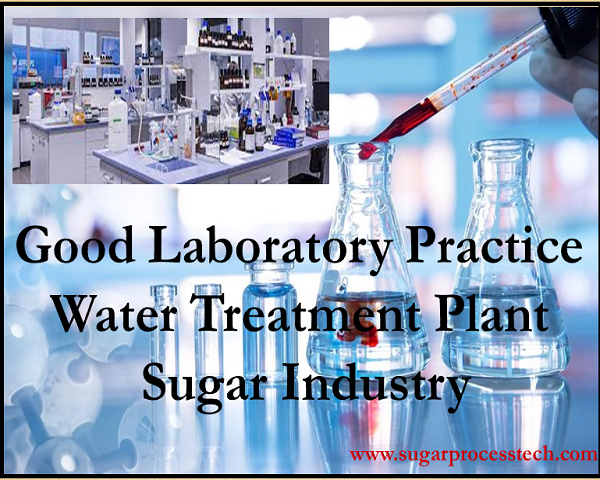Introduction about Good Laboratory Practice:
Anybody undertaking analysis work should acquire skill in handling apparatus and also be aware with certain basic procedures. Analyst who gives important to such things as cleanliness, orderliness, care, organization and self-discipline are likely to get right results in comparison to those who ignore this as insignificant things.
Good Laboratory Practice Before starting the analysis
1. Keep the place where analysis to be carried neat, well-ordered and clean.
2. Clean all equipment and apparatus which are going to be used for analysis.
3. Do not keep too many apparatuses on the working place. If a particular equipment’s job is over, put it back into its specified place or its stand.
4. Label all containers which contain solution, precipitate and filtrate. Cover the container to prevent it from getting contaminated from dust etc.
5. The reagent bottle should be immediately put back to self once its use is over.
6. Keep the sample ready.
7. Decide the method of determination and arrange all necessary items.
8. Check and standardize all instruments required for the procedure.
9. Make sure you are aware with the method. If not read and understand before proceeding.
10. Plan the work stage by stage.
11. Give extreme importance to safety. Make sure safety glasses and clothes are available.
12. Handle dangerous and hazardous material with care.
13. Make sure all reagents, chemical and instruments are available for the analysis to be made.
During Analysis for Good Laboratory Practice
1. Keep a note book for recording purpose.
2. Check sample temperature, carryout sampling as per procedure and label each aliquot after each stage of analysis. So that it can be traced back to original sample.
3. Pipettes, burettes and other equipment’s which are used frequently should be cleaned at each stage of operation.
4. Procedure should be followed step-wise as mentioned in the literature or any other reference being used.
5. Rush can spoil your work. Be careful and don’t hurry. If you do you are sure to get wrong result.
6. Record observation and data etc at each stage of operation during the analysis process.
After the Analysis for Good Laboratory Practice
1. Calculate the required answer from the data’s collected during analysis.
2. Calculation will also indicate whether the analysis was properly carried out or not.
3. Recheck with a third person familiar with the method to make sure that there is no calculation errors. Should be take care about Inappropriate decimal number in calculation. This will help in unnecessarily not repeating an exercise.
4. Do not remove the sample till you are convinced with the answer and satisfactory report has been made.
5. Clean the entire area before starting next analysis.
General Required Equipment List in a Laboratory
Hot air oven
Air oven
DM Unit
Distillation unit
pH meter
Conductivity meter
Hot plate
Water Bath
Analytical Balance
Sample Collector
Muffle furnace
Magnetic stirrer
Centrifuge
Vacuum oven
Water pump
Heating mantel
Thermometer(Various ranges)
Turbidity meter
Dissolved oxygen meter
Flame photometer
Spectrophotometer
Incubator
Microscope
Hydrometer
Density meter
Redox monitor(For humidity measurement)
General Required Laboratory Apparatus
Volumetric flask
Pipettes(graduated)
Burettes
Burette stands
Pipette stands
Wash bottles
Glass rods
Test tubes
PVC Tubing
Beaker(glass and plastic)
Evaporating dishes
Tube connectors (TRIGGER & straight)
Conical flask
Crucibles and beaker tongs
Dessicators and dry
Buchuer funnel
Measuring cylinder
Reagent bottles
Gas burners
Weighing bottles
In the above mentioned equipment list & above laboratory apparatus list are not in-depth, Some more equipment may be required as per the analysis is carried out in our laboratory.
Related Articles:
ETP | Sugar industry effluent treatment plant process philosophies
Boiler feed water specifications | Specifications of Boiler water
Basic concepts of cooling tower, types of cooling towers, formula for cooling tower efficiency
Water Cooling System | Difference Between Cooling Tower and Spray Pond
Membrane filtration technology | Types and levels of membrane filtration
Anaerobic Digestion | Activated Sludge Process for Wastewater Treatment
Anaerobic Treatment Process for Industrial Waste Water
Various methods for Industrial Effluent Treatment Plant
Distillery Spent Wash Treatment by Biomethanation Process
Anaerobic Digester |Continuous Stirred Tank Reactor Design Criteria | CSTR

2 thoughts on “Good Laboratory Practice Related to Water Treatment Plant and Sugar Industry”
gopi emmidisetty
(November 8, 2023 - 5:27 pm)Dear sir,
highly thankful to your web site provided all the respective subject related sugar industry like guide. in addition to that we requesting add some more for LAB analysis for sugar as well as water analysis. like TRS for molasses, COD,BOD for Water example.
thank you and regards
GOPI EMMIDISETTY.
9866725956
siva alluri
(November 10, 2023 - 3:43 pm)Thank you, We will upload soon